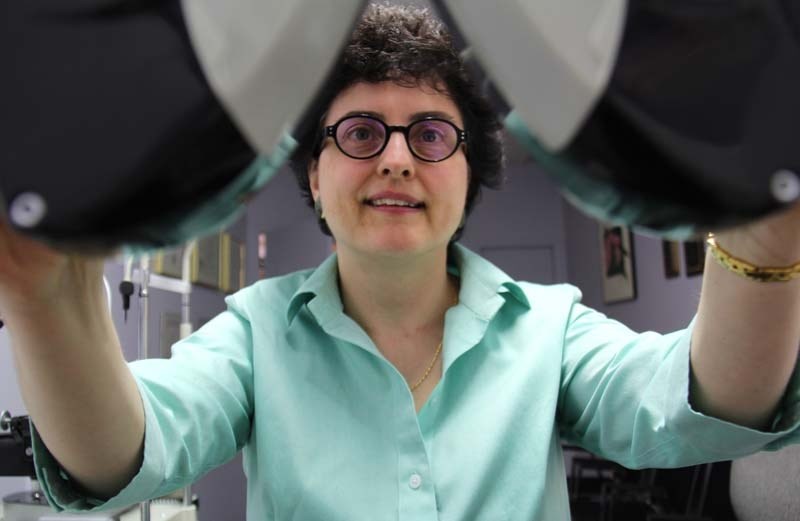You may have 20/20 vision but that doesn’t necessarily mean your eyes are healthy, says Dr. Holly Parker, an optometrist at St. Albert Vision Centre in Tudor Glen.
“You can have 20/20 vision and be developing cataracts, you can have 20/20 vision and have glaucoma. You could have 20/20 vision and have diabetic retinopathy,” she says.
“Those things if left unchecked will cause far more serious consequences later on.”
May is vision health month. The Canadian National Institute for the Blind estimates that more than100,000 people in Alberta are living with blindness or vision loss.
On a national scale, that is more than the number of people living with breast cancer, prostate cancer, Alzheimer’s and Parkinson’s disease combined.
People mistake good vision for good eye health, explains Parker.
“There are people who think ‘Oh I can see the signs well, I don’t need to go in for an eye exam. I’m reading alright, I don’t need an eye exam. The children aren’t complaining so I don’t need to take them.’”
Once patients come in for a check up, they are often surprised their vision is not as perfect as they thought.
Parker says cataracts and refractive errors (nearsightedness and farsightedness) are the most common eye conditions she sees her practice. Fortunately these diseases can be treated early on with surgery (if caught early enough) and corrective lenses, respectively.
We know statistically we don’t have all Kindergarteners coming in for an annual eye exam, notes Parker.
“For children who are starting school and are not able to see well, it puts them at a disadvantage in their learning process. Uncorrected vision is one of the things that can make it more challenging, and can be solved so easily with a pair of glasses.”
Other eye diseases such as age-related macular degeneration, glaucoma and diabetic retinopathy, are more complicated to treat.
More people are being diagnosed with diabetes, says Parker, and thus more are suffering from diabetic retinopathy – when blood vessels in the retina weaken or swell and result in blood leakage and the growth of new vessels.
“It’s certainly something that has grown as a potential concern,” remarks Parker. Diabetes is a “tricky disease” as diet, exercise and medications work for some patients, and not for others, she says.
If eye diseases aren’t managed well from the start, they can ultimately lead to vision loss.
“Not being able to see well leads to more difficulty navigating – more risk of having a fall, more risk of tripping, more risk of breaking a hip. If vision gets bad enough, (people) really shouldn’t be driving anymore,” says Parker.
“It ends up costing the system, when people don’t see well.”
It is estimated that vision loss costs the Canadian economy $15.8 billion per year. It is expected to exponentially increase as the population ages, says John McDonald, executive director of CNIB’s Alberta and Northwest Territories branch.
“Our population is aging fast, and as we age we become more susceptible to developing a major eye disease. Without action, the number of Canadians with vision loss has the potential to double within the next 25 years.”
Preserve your vision
• Stop smoking: smoking increases your risk of macular degeneration<br />• Eat well: Lutein and zeaxanthin are carotenoids that act as antioxidants in the eye. They can be found in green leafy vegetables and eggs. <br />• Take eye breaks: look away from your computer screen, phone screen, TV screen to loosen up your eye muscles and help them relax and refocus.<br />• Protect from dryness: Optometrists recommend artificial tears to keep eyes moist in Alberta's dry climate.



